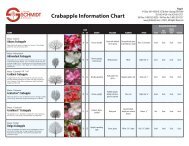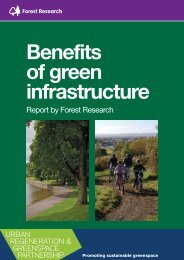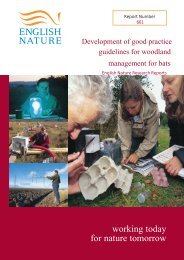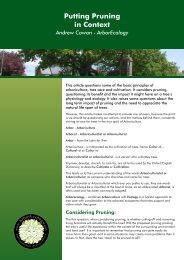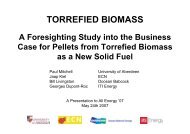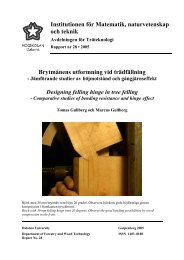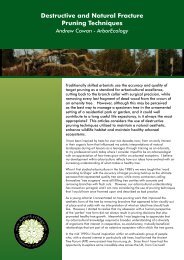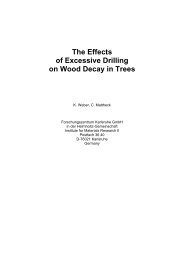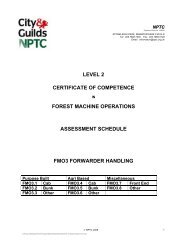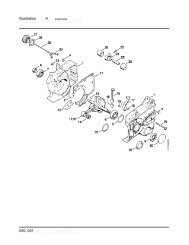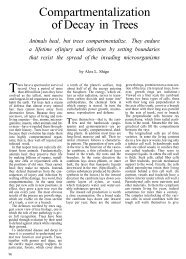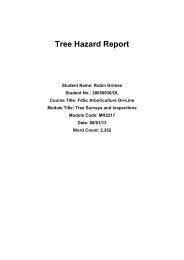Ganoderma on Trees.pdf - Arbtalk
Ganoderma on Trees.pdf - Arbtalk
Ganoderma on Trees.pdf - Arbtalk
Create successful ePaper yourself
Turn your PDF publications into a flip-book with our unique Google optimized e-Paper software.
© Copyright F.W.M.R Schwarze and D. Ferner May 2003Selective delignificati<strong>on</strong> is now regarded as being of less c<strong>on</strong>cern for tree safety thanother kinds, having been shown in recent studies to cause <strong>on</strong>ly a slow decrease instrength (SCHWARZE, 2000). Also, in trees with a relatively good ability to lay downnew wood, there are usually clear biomechanical signs of such decay before anyincreased likelihood of failure occurs (MATTHECK and BRELOER, 1994; SCHWARZE etal., 1999). In the later stages of decompositi<strong>on</strong>, the wood disintegrates with a soft orsp<strong>on</strong>gy texture (SCHWARZE et al., 1999)In temperate z<strong>on</strong>es, decay caused by <str<strong>on</strong>g>Ganoderma</str<strong>on</strong>g> spp. is often limited to the roots andthe lower stem. The presence of the fungus can usually be detected quite easily due tothe development of the perennial fruit bodies. However there are some species, forinstance G. resinaceum, which form <strong>on</strong>ly annual fruit bodies and which can thereforebe easily overlooked. Typical signs that accompany the decay include alterati<strong>on</strong> in theshape of the stem (e.g. bulges, including ‘bottle-butt’), and perennial cankers, as wellas a str<strong>on</strong>gly decreased speed of sound within the wood (SCHWARZE and FINK, 1994;SCHWARZE et al., 1999).Diagnosis and differentiati<strong>on</strong>In the UK there are four main un-stalked species that occur <strong>on</strong> urban trees, these havewell-marked differences, which are described in more detail as follows (see Figs. 1A-1C).<str<strong>on</strong>g>Ganoderma</str<strong>on</strong>g> applanatum (Pers.) Pat.<str<strong>on</strong>g>Ganoderma</str<strong>on</strong>g> applanatum (fig. 1A) is widespread in the northern hemisphere. It has abroad host spectrum, mainly c<strong>on</strong>sisting of deciduous genera, e.g. Acer, Fagus, Tilia,Populus, Platanus, Quercus, Aesculus, Betula, Alnus, Fraxinus and Salix, but alsooccasi<strong>on</strong>ally including c<strong>on</strong>ifers such as Abies and Picea. It comm<strong>on</strong>ly causes a rootandbutt-rot but, being c<strong>on</strong>fined mainly to trees with dysfuncti<strong>on</strong>al xylem associatedwith large wounds <strong>on</strong> the roots, it is regarded as predominantly saprotrophic(PETERSEN, 1983). ROSS (1976) showed that, <strong>on</strong> aspen, Populus tremula, it wasunable to infect roots less than 7.5 cm in diameter.For further informati<strong>on</strong> please c<strong>on</strong>tact Page 3 of 21ENSPEC Pty Ltd <strong>on</strong> craig.hallam@enspec.com



